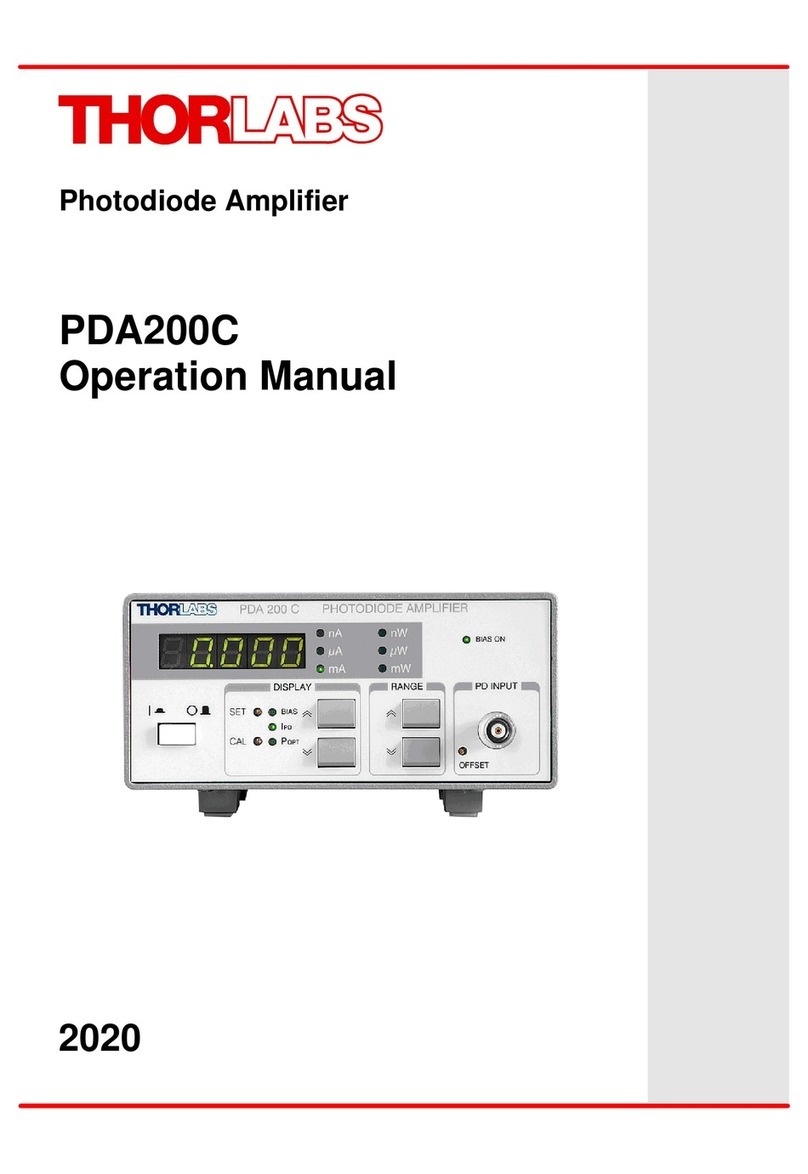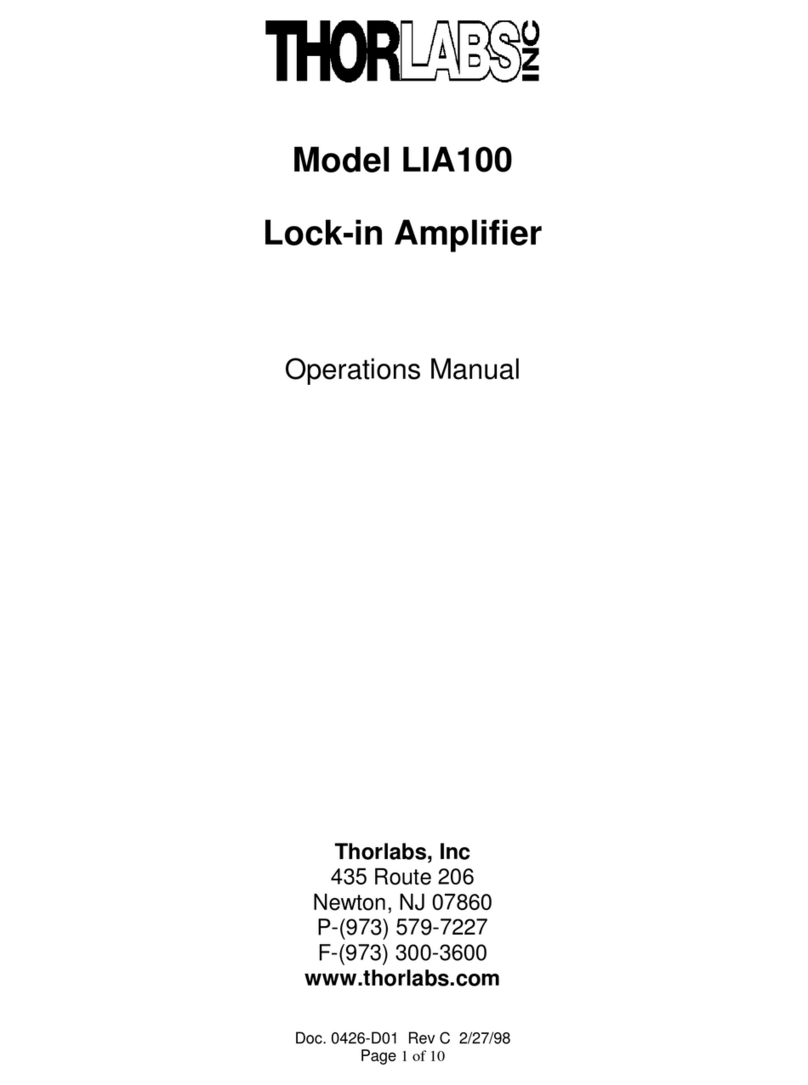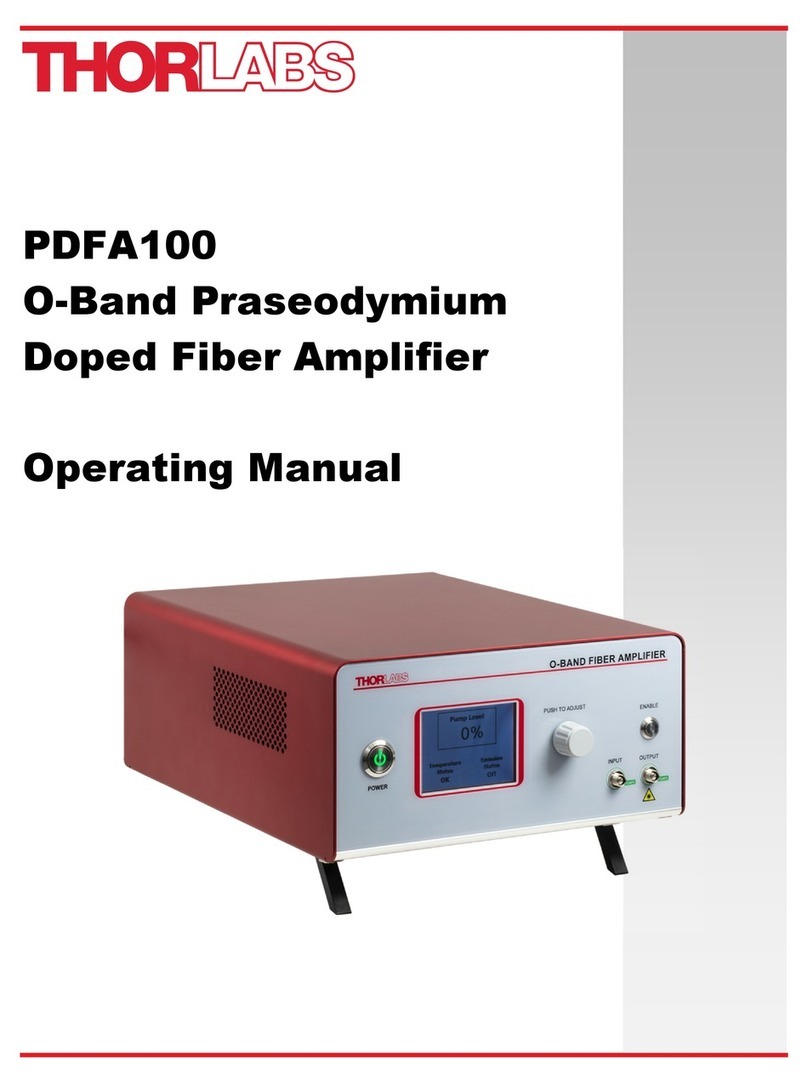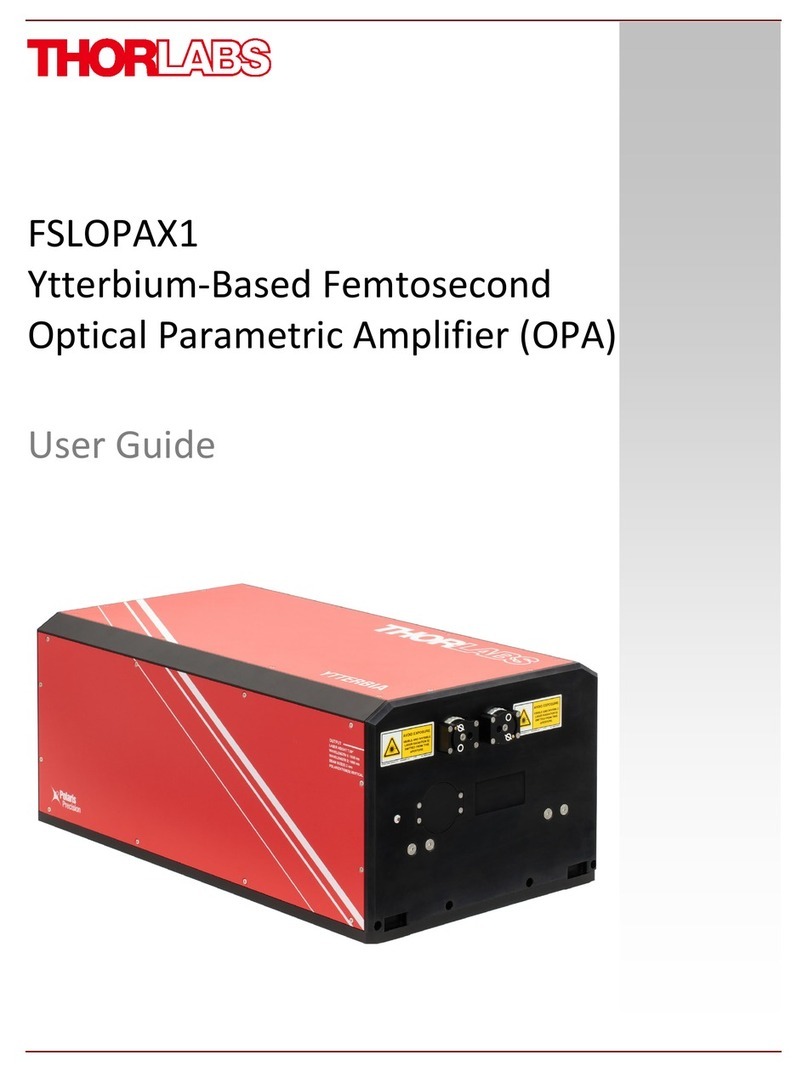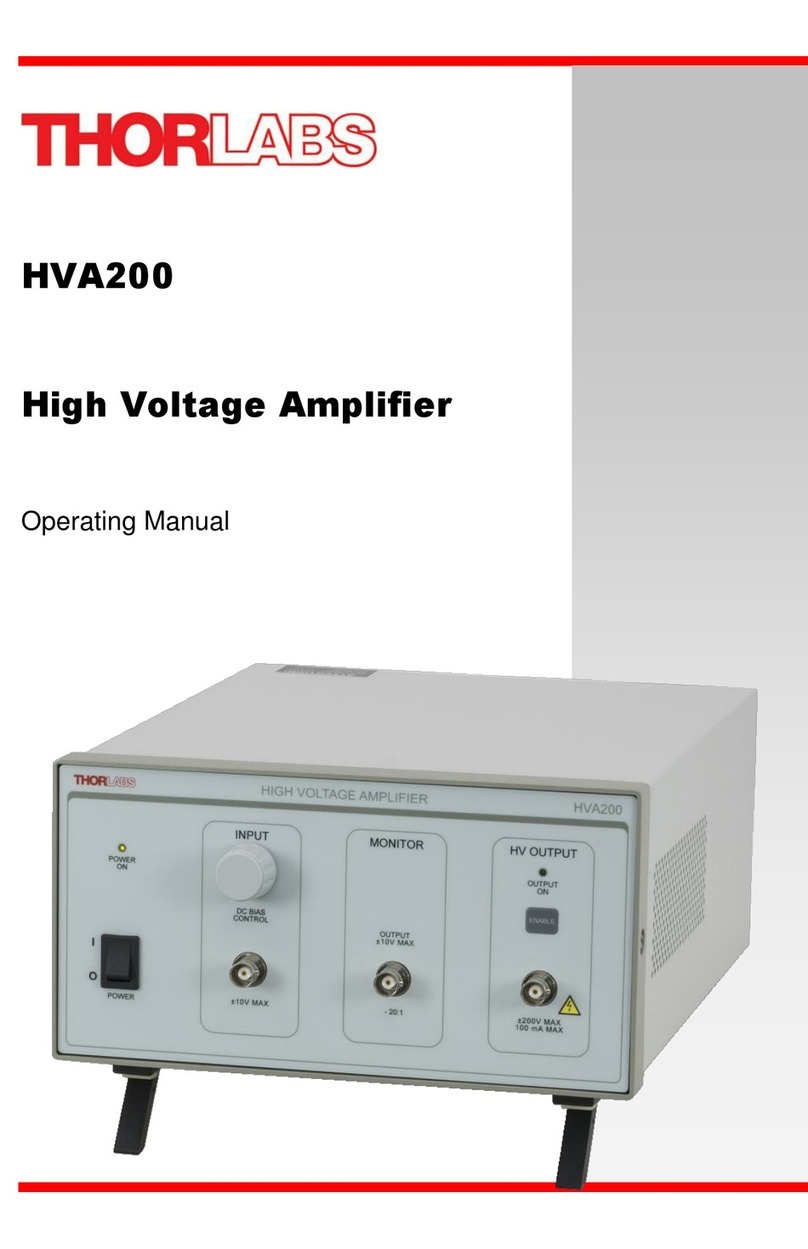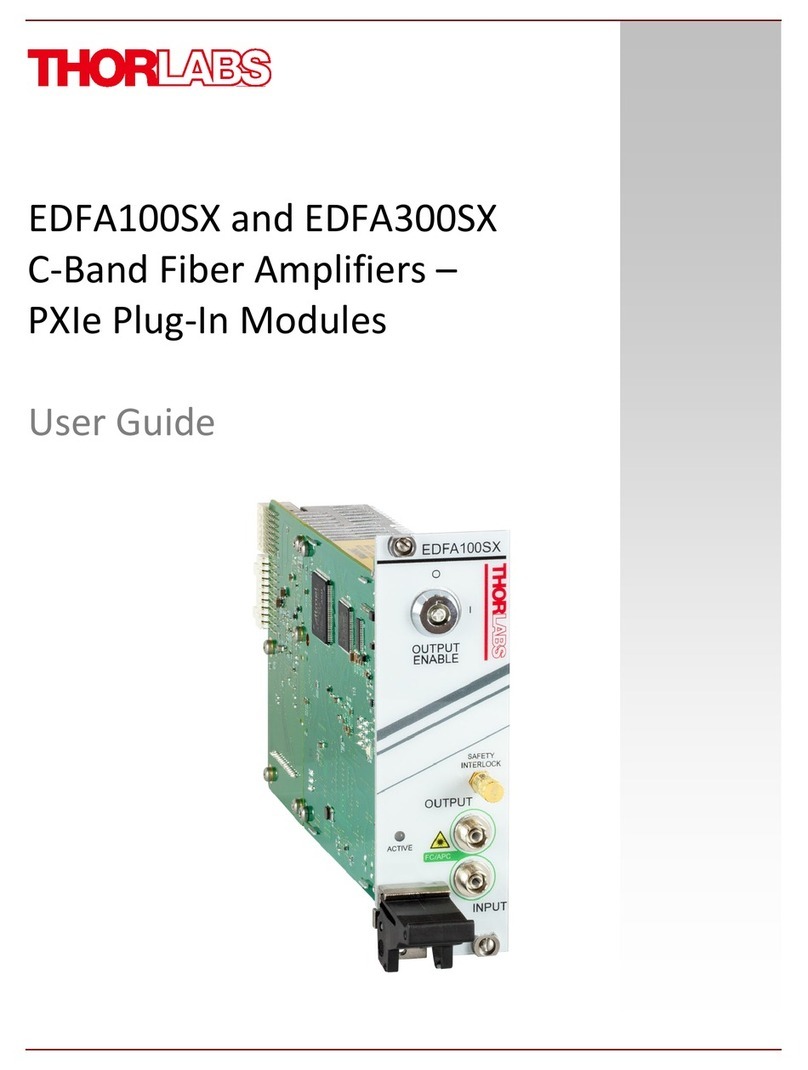
© 2012 Thorlabs
1 General Information
3
1 General Information
The Thorlabs PDA200C is a precise, small photodiode amplifier to operate with all kinds of
photodiodes. After calibration the PDA200C can be used as precise optical power meter.
The photodiode amplifier PDA200C is excellently suited for:
simple operation of photodiodes (transimpedance amplifier)
sensitive pico-Ampère meter
low noise amplification of photodiode current
simple optical power meter
The PDA200C is easy to use due to the clearly arranged front panel. The operating parameters
are shown on an illuminated 5-digit LED display. Either PD-current, optical power or bias
voltage can be displayed. The displayed parameter is chosen by up / down toggle switches and
indicated by LEDs. The units of the measurement for current and power ranges are indicated
by LEDs. The unit for bias voltage is V.
With a 12-turn potentiometer the offset of the input amplifier and of the photodiode can be
adjusted.
With a sliding switch on the rear side of the PDA200C a bias voltage range of +0..+10 V (for
polarity anode grounded) or -0..-10 V (for polarity cathode grounded) can be applied to the
photodiode. The voltage is set with a 12-turn Potentiometer.
With a 12-turn potentiometer the displayed power values can be calibrated for a known power
level.
A voltage proportional to the photodiode current is provided at an analog control output.
The installed mains filter and the transformer shielding provide a low ripple at the analog
control output.
If requested Thorlabs offers calibrated photodiodes as accessories.
1.1 Safety
Attention
All statements regarding safety of operation and technical data in this instruction
manual will only apply when the unit is operated correctly as it was designed for.
Only with written consent from Thorlabs may changes to single components be carried
out or components not supplied by Thorlabs be used.
This precision device is only serviceable if properly packed into the complete original
packaging including the plastic foam sleeves. If necessary, ask for a replacement
package.
Do not obstruct the air ventilation slots in housing!
Do not remove covers!
Refer servicing to qualified personnel!
Before applying power to your PDA200C system make sure that the protective conductor of the
3 conductor mains power cord is correctly connected to the protective earth contact of the
socket outlet!
Improper grounding can cause electric shock with damages to your health or even death!
Also make sure that the line voltage setting of the fuse holder at the rear panel agrees with
your local supply and that the corresponding fuses are inserted. If not, please change the line


